Next-generation Hyundai Veloster Coming to Detroit, and Not a Moment Too Soon
If the multitude of spy shots circulating around the internet wasn’t enough of a clue, Hyundai’s making it clear. There will be another Veloster, but you’ll have to wait about six weeks to see it.
The Veloster, an oddball take on the traditional hatchback, debuted in 2011 for the 2012 model year and, despite the declining popularity of traditional passenger cars (and especially coupes), managed to rack up pretty consistent sales since its unveiling. Sporting three side doors of uneven length and two-piece rear glass, the Veloster only really ran into sales trouble this year.
The next Veloster looks to keep the original’s unique profile, but Hyundai’s flagging fortunes requires a hatch hot enough to buoy the brand.
Americans Are Gonna Love Our New Crossover, Mazda Claims
There’s no automaker with an American dealer network that can’t make do with another high-riding utility vehicle.
If you’re Ford, four is most definitely not enough, so there’s two more on the way — one exciting, the other decidedly not. If you’re General Motors, you’ve already green-lit the import of a Chinese-built crossover to fill a hole in a lineup. If you’re Hyundai, well, you’ve just s ummoned a product army.
Mazda needs a new crossover. There’s simply too many sales going unrealized in the United States, where the brand is on track to record a second yearly sales decline. Knowing there’s only one surefire way to boost volume these days, Mazda is placing its hopes on a new crossover made for America, made in America, that somehow won’t gobble up sales of its existing utility lineup.
Fiat Chrysler to Guangzhou: Swipe Right
Seven years ago, Fiat Chrysler Automobiles and China’s Guangzhou Automobile Group entered into a joint venture, forming a 50/50 partnership between the companies. Currently selling three locally produced Jeep models – the Cherokee, Renegade, and Compass – the JV also imports the Grand Cherokee and Wrangler. Last year, sales tripled to nearly 150,000 units.
Now, according to Automotive News, the parent companies are in discussions to deepen their tie-up in China. Talks are apparently focusing on models, production, and sales targets.
Nissan Mulls Extra U.S Manufacturing Capacity
Earlier this year, the big bosses at Nissan expressed their desire to grab a full 5 percent of pickup truck market share in the United States. However, chasing arbitrary targets has now fallen in favor of smart growth.
Still, lighting a fire under the brand seems to have worked, with Nissan moving nearly 1.5 million units in 2016, almost a million more annual sales than 15 years ago. With those numbers in mind, the company is acknowledging it’ll soon need a new assembly plant in America.
Tesla's Big Gamble With Other People's Money
Unless you were living under a rock or on the moon late last week, you know Tesla introduced not one but two concepts on Thursday night — a Class 8 semi truck and a kinda-sorta-maybe Roadster (is it a roadster or a targa? It’ll only cost you a quarter mil to find out).
Since then, many corners of the internet have been yammering about the feasibility of Tesla’s plans, not to mention the wisdom of taking eyes off the very important ball that is the Model 3 in favor of two models that likely won’t appear until the next decade.
Another Hybrid Bites the Dust: Toyota Prius V Packs It in After VI Model Years
Okay, the “V” stood for “versatility,” but the largest Toyota Prius family member’s obvious usefulness hasn’t earned it a lasting place in the American automotive landscape. After arriving for the 2012 model year, the lengthened hybrid, which boasted 50 percent more interior volume than its Prius sibling, will disappear from the U.S. after 2017.
Early sales of the Prius V significantly bolstered the volume of the hybrid family, which also includes the Vrtucar-approved Prius C. However, the model’s first full year of sales proved to be the V’s high water mark. Sales declined each year thereafter, and much of the blame rests on another vehicle in the Toyota showroom.
Nissan Cites Staffing Issues as Cause for Final Inspection Snafu, Subaru Says Sorry
On Friday, Nissan Motor Co. blamed a shortage of key staff for improper final inspection procedures at Japanese assembly plants. The problem, which amounts to little more than not having having a specially certified technician give each vehicle a final once-over, has forced the automaker to recall 1.2 million vehicles within Japan this year. As the mandate applies only to vehicles sold on the nation’s domestic market, no exports to North America are affected.
However, that hasn’t stopped Japan’s government from coming down hard on the company for its bureaucratic misstep. After discovering that uncertified inspectors were signing off on vehicle checks required by the transport ministry, Nissan has been incredibly apologetic. It even launched a full-scale investigation, finding that “nonconforming final inspections” were commonplace by the 1990s at the plants, and could even have existed at one factory since 1979.
Tesla Roadster: Guess Who's Back, Back Again?
The Roadster’s back. Tell a friend.
Not that you’ll need to, of course. Elon Musk and Company seemingly pulled off the impossible last night in California, blowing up the internets by upstaging Tesla’s own semi truck reveal with a carefully choreographed “one more thing” moment.
The Model 3 Is the Tesla Faithful's Personal Bodhi Tree
Patience, as we’ve been told, is a virtue. Therefore, the most virtuous individuals occupying the ball of mud we call Earth must be the Tesla faithful currently awaiting their pre-ordered Model 3 sedans. The speed of the vehicle’s launch has been sedate, to say the least. Tesla Motors finds itself plagued by production bottlenecks, which hasn’t helped the already long wait times facing those who dropped a sizable wad of bills just for the privilege of eventually owning its latest model.
However, the lengthy intermission between launch and ownership doesn’t appear to be diminishing their love for the company — a testament to the brand’s difficult-to-tarnish image. Fans of the automaker seem content to wait it out in tranquility like Siddhartha Gautama under the tree of enlightenment.
Despite Hurdles, Tesla Promises a Semi Truck for Thursday
Unbothered by the constraints of space and time, Elon Musk took to Twitter yesterday, breathlessly announcing a press conference for Thursday. Is the call’s topic set to address Model 3 production troubles? Or, perhaps, provide some insight into the supply chain woes at the Gigafactory? No, dear reader, nothing so mundane.
It’s to announce the Tesla semi truck, which is surely the most urgent topic and best use of resources at Tesla these days.
Nissan Pivots, Stops Cracking the Sales Whip
From the depths of the recession to 2016, Nissan’s U.S. volume doubled — from a six-year low of just over 689,000 vehicles in 2009 to over 1.4 million last year. Not a bad track record for any automaker.
However, as the sales landscape cools off after the post-recession boom, Nissan’s new leader feels it’s a better idea to hold a steady course, rather than gunning the sales throttles to meet a pre-selected sales target. In fact, those targets are now a thing of the past.
Toyota's Truck Production Plans Largely Dependent on NAFTA Existing
Despite President Trump giving Toyota significant praise for its continued investment in the United States last week, the success of the automaker’s production plans hinge on the continuation of NAFTA — something the Commander in Chief has been vehemently opposed to since his well-before his inauguration.
Toyota and Mazda’s $1.6 billion factory is anticipated to yield 150,000 Corollas annually and free-up assembly facilities in Mexico that would build the Tacoma pickup. However, if the North American Free Trade Agreement is dissolved, anything produced south-of-the-boarder could be subjected to the chicken tax. Were that to happen, Toyota would be placed into quite a predicament and faced with high import taxes on any trucks it had hoped to ship to the U.S.
Low Energi: Production Ends on Ford's C-Max Plug-in, With Hybrid to Follow
It’s a near-silent swan song for a duo of electrified Ford models. The Ford C-Max, which debuted in late 2012 in both hybrid and plug-in hybrid form, hit its sales peak during its first full year on the market, declining every year since.
As Ford Motor Company shakes up its U.S. production landscape — ironically, to bolster production of trucks and SUVs — the ungainly-looking C-Max is on its way to the cemetery. The automaker has confirmed the ceasing of production of the C-Max Plug-in, with the Hybrid variant to follow in the middle of next year.
Ford Channels Its Inner Tony Stark, Deploys Exoskeleton
It might not allow Ford line workers to lift 100 tons like Iron Man, but new tech being trialed at Ford might prevent serious injury on the job.
Called EksoVest, the wearable technology elevates and supports a worker’s arms while performing overhead tasks. It’s the latest example of advanced technology showing up on assembly lines to reduce the physical toll on employees.
Searching for Volume, Hyundai Considering Bringing More Vehicles Stateside: Report
Hyundai says it hasn’t made a decision one way or the other, but a South Korean publication claims company officials are considering a huge U.S. production push, all designed to reverse falling sales.
Reported by Seoul Economic Daily, the tentative plan (leaked by anonymous industry officials) is all about getting more utility vehicles into the hands of American buyers. It would see U.S.-market Tucson and Kona crossovers, currently built in Korea, move assembly to Montgomery, Alabama. A pickup truck would follow.
Ford Joins Forces With Zotye to Build Baby-sized Electric Cars for China
In August, Ford began exploring a possible joint venture with Chinese automaker Anhui Zotye to build electric vehicles in China. While we didn’t know what they would be building exactly, sales of battery-only and gasoline-electric hybrids in China rose by 50 percent last year to roughly 336,000 deliveries — odds were good that whatever came of the team-up would remain in Asia.
Then, on Wednesday, the two companies reached an agreement. Ford and Zotye have greenlit a $756 million joint venture for the creation of an entirely new brand focused on small EVs. The vehicles will probably be among the most petite Ford will offer in Asia, as it has already committed itself to shifting at least 70 percent of Ford-branded vehicles sold in the country to electrified powertrain by 2025. The new brand will also produce “city cars” as its primary stock.
There Just Might Be a Kona Under the Tree This Christmas
Desperate eager to fill holes in its product lineup and put some bounce in its sales step, Hyundai unveiled the subcompact Kona crossover earlier this year, with the model arriving on North American shores in the first quarter of 2018. The Kona is just one part of Hyundai’s revamp of its crossover lineup — and its culture.
More crossovers, bigger and smaller crossovers, EV crossovers, and faster crossovers make up Hyundai’s short-term goals. By “faster,” we’re referring to the development cycle, unless the brand has some hot “N” action waiting for one of its cargo-friendly models. Caught off guard by the utility vehicle craze, Hyundai wants to pare its product planning window down from three years to a year-and-a-half, allowing a quicker response to new market trends.
But the first step towards a more agile Hyundai Motor Company is the Kona. Small, cladded, and efficient, the 2018 Kona might arrive sooner than planned.
Obituary: Range Rover Evoque Coupe, 2012-2017
Fans of high-riding, luxury-branded, two-door SUVs were saddened this week to learn of the demise of the Range Rover Evoque Coupe.
Aged six model years, the Range Rover Evoque Coupe is survived by its five-door and convertible brothers. It was preceded in death by any semblance of off-road capability and the proper use of turn signals.
GM Opens the Taps After Strike Depletes Chevrolet Equinox Supply
The deal reached with striking autoworkers in Ingersoll, Ontario, last month prevented the supply of hot-selling Chevrolet Equinox crossovers from reaching critical levels, but we now know just how bare the cupboard was.
After a high of 74 days of supply in June, rising sales meant inventory of the newly redesigned compact crossover shrunk to 53 days’ worth at the beginning of September, shortly before the month-long strike began. It plummeted thereafter. With another month of Equinox sales gains under its belt, GM is busy making up for lost production.
Nissan Back On Track in Japan, Resumes Vehicle Production
Nissan is resuming production at five of its domestic plants this Tuesday after Japan’s transport ministry finally approved changes to the improper final-inspection procedures that forced a major vehicle recall in October. The issue involved final checks being conducted by uncertified technicians, a procedure only mandated for vehicles sold within the brand’s home country of Japan. Exported vehicles aren’t subjected to it and, so far as we know, didn’t have any problems for having forgone the inspection.
However, JDM production has been suspended since October 19th and Nissan has scrambled to recall 1.2 million vehicles after being required to re-inspect everything built for the Japanese market over the last three years. That’s a large penalty for what amounts to little more than having the wrong guy eyeball a car as it rolls off the assembly line.
Buick Poised to Become GM's Greenest Brand - If the Public Wants It
The General Motors division, known for past land yachts like the Electra 225, Roadmaster, and Riviera, will become the automaker’s cleanest in the years to come. Whether that holds true in the United States market depends on a lot of things, including whether lobby groups succeed in saving the marked-for-extinction EV tax credit.
Duncan Aldred, vice-president of sales and marketing for GM’s Buick and GMC divisions, claims the near-luxury Buick badge will appear on the company’s future electric vehicles. However, given the shaky state of the EV market in America, new Buicks will head to greener pastures first.
See the USA in a Mahindra? Indian Automaker to Open Detroit-area Plant, Report Says [UPDATE]
For the company’s sake, hopefully Mahindra & Mahindra’s second attempt to enter the U.S. market won’t go the same way as the first.
The Indian automaker is reportedly planning a 400,000-square-foot assembly plant in the Detroit suburb of Auburn Hills, and has scheduled a press conference with government officials for November 20th. As we all know, local representatives and their higher-ups don’t like braving the cold unless there’s a promise of jobs and cameras.
A previous attempt to tap into the U.S. market went nowhere, ending in a lawsuit. If this plan comes to fruition, it would make Mahindra’s auto plant the first built in the Detroit area in decades — and would provide American consumers with some new SUV options.
Tesla's Feverish Production Drive Sometimes Means Partial Assembly at Stores: Report
Never has the air of breathless futurism surrounding Tesla taken such a hit. Following a revealing earning report and numerous reports of continuing production bottlenecks, this week wasn’t a good one for either Tesla shareholders or Model 3 reservation holders.
The electric automaker pushed back its 5,000-vehicle-per-week goal to the end of the first-quarter of 2018, rather than the end of this year. Its 10,000-vehicles-per-week goal remains a question mark. Tesla also announced a decrease in Model S and X production to bolster resources for Model 3 builds. In reporting a quarterly loss of $619 million, Tesla made it clear it’s burning through piles of cash in an attempt to smooth out production line hurdles.
Now, a new report sheds light on the frenetic activity occurring inside its Fremont, California factory. One of the claims certainly won’t soothe those worried about a long-standing Tesla concern: build quality.
It's Time to Figure Out What's Going on at Tesla Motors
Lately, we’ve been guilty of the same behavior as a lot of other well-rounded and objective automotive publications — bashing Tesla Motors. It hasn’t been done maliciously, but we’d be lying if we said the divisive hype and hate surrounding the company didn’t bother us. However, since the summer launch of the Model 3, a slew of happenings at Tesla have have raised unanswered questions.
The biggest question surrounds the cause of the company’s rather severe production delays. Tesla also fired hundreds of employees this month, without any clear answer as to why, and seems to have shelved a cross-country trip aimed at highlighting the progress made with its Autopilot driver assistance platform.
None of this would be quite so noteworthy if its stock valuation wasn’t still stratospherically high and CEO Elon Musk hadn’t publicly promised so much — but that isn’t the reality we’re living in. Now, with the company reporting its third quarter earnings on Wednesday evening, we’re hoping to get some clarity on what exactly is happening in Fremont, California.
Hope for Hyundai? China Agrees to Ignore South Korea's Missiles
When it comes to the positively frosty relationship between China and South Korea, this is the part of the movie where the two countries bump into each other at the bookstore and realize they should work out their troubles instead of giving each other the silent treatment. You know, for the kids.
For South Korea, China’s decision to warm up the relationship — which soured after the jittery country placed U.S.-supplied defensive missiles on its soil — is the best news its auto manufacturing sector has heard in ages. Perhaps soon it won’t be frowned upon to own a Hyundai or Kia in Beijing.
I Want to Believe: Nissan May Find a Way to Bring Back the Xterra
Do you miss the Nissan Xterra? Me, too. Appropriately blocky and truck-like in all the right ways, Nissan’s midsized off-road SUV was a great blend of tough looks and actual, y’know, functionality.
The old Xterra vanished from showrooms in 2015. Reading between the lines of a statement made by the head of Renault-Nissan-Mitsubishi’s light commercial vehicle division and reported by Aussie site Drive, a new one may be on the horizon.
In With the Old: FCA Plans to Ram Its Way Through 2018
Unless you’ve been living under a rock, you know Ram will drop a new half-ton pickup at the North American International Auto Show in Detroit in January. It’s a big gamble redesigning a cash cow, lest the truck faithful turn up their noses at the new styling.
In the past, manufacturers have hedged their bets by simultaneously producing both the new and old styles, such as when Ford offered both the F-150 and F-150 Heritage in 2004. Now, Ram appears poised to deploy the same strategy in 2018, according to bossman Sergio Marchionne.
Ditch That Slant Six: Dodge Hellcat Powerplant Is Now Available as a Crate Engine
This should lead to more than a few odd pairings. Mopar, Fiat Chrysler Automobiles’ performance and aftermarket parts division, will now offer a Dodge SRT Hellcat engine — the company’s 707 horsepower, supercharged 6.2-liter V8 — minus the car.
Dubbed the “Hellcrate,” the warranty-backed engine and associated kit was unveiled Monday ahead of this week’s SEMA show in Las Vegas. This means Mopar fans looking to own a 707-hp beast have other options than just visiting an FCA dealer and signing on the dotted line for a new vehicle.
Tesla's Production Goals Are Starting to Look Unfeasible
We’ve debated Tesla Motors’ production ramp-up in the past, coming to the obvious conclusion that the automaker has a long road ahead of it before its proposed volume goals can be reached. The company knows this and Elon Musk has repeatedly said scaling up Tesla’s vehicle assembly will be akin to a kind of “production hell.”
However, we haven’t done a comparative analysis to extrapolate just how ambitious Tesla’s targets truly are. Half a million vehicles by next year is a lot of annual production for any fledgling automaker. We assumed the company would do its best and we’d see how close it came to the bar at a later date. But, with the Model 3 production getting off to an incredibly slow start, it’s worth looking at how far Tesla’s factory in Fremont, California, will have to climb to achieve the desired numbers.
It isn’t looking particularly good in the short term.
End of the Line for Nissan's Z?
Z is the last letter in the alphabet, and the current Nissan Z might be the last one in the company lineup.
At this year’s Tokyo Motor Show, Philippe Klein, Chief Planning Officer for Nissan, was decidedly non-committal when asked by media in attendance about the Z car’s future. This is stance is not new but, this time, the exec’s answer came with a few more details.
Toyota Pares Down Mexican Plant Plans, but 100,000 Extra Tacomas Are Still on the Way
The only thing better than two plants producing North America’s hottest-selling midsize pickup is three plants churning them out. That’s a big part of Toyota’s plan to stay ahead of General Motors and future competitors like Ford in the small yet vital segment.
Despite making every effort over the past year to build more Tacomas at its Tijuana, Mexico, and San Antonio, Texas, assembly plants, those facilities are maxed out, leading to Toyota’s August decision to punt Corolla production (initially bound for a planned Guanajuato, Mexico, plant) to a new $1.6 billion U.S. facility in the near future.
On paper, the Guanajuato plant aimed to produce 200,000 Corollas per year. Well, those plans have changed. Toyota now says it will drop its investment in the plant from $1 billion to $700 million, with production capacity dropping by half. That still means 100,000 extra Tacomas for a hungry customer base.
Ditching Opel and Vauxhall Hits GM in the Pocketbook; Crossovers to the Rescue!
Thanks mainly to the unloading of its longstanding European operations, General Motors reported a $3 billion net loss in the third quarter of 2017, according to an earnings report released Tuesday.
Punting responsibility of its Opel and Vauxhall subsidiaries to France’s PSA Group definitely didn’t come without a penalty, with most of the expense ($5.4 billion related to deferred tax assets and pension costs) incurred during the last quarter. Still, GM prefers the one-time earnings hit to keeping an unprofitable operation alive on the other side of the Atlantic.
While the Opel sale cut into the automaker’s balance sheet, The General also saw less earnings from car sales. Production declined in Q3 2017 compared to last year, and that meant less black ink. Still, GM doesn’t see many dark clouds. Why? One word: crossovers.
Toyota TJ Cruiser May Reach Production If the World Proves Itself Worthy
Toyota is parading the TJ Cruiser concept around the Tokyo Motor Show, taking the public’s temperature on how it might be received as a production model. The vehicle itself is an amalgamation of a traditional sport utility vehicle and ultra-practical cargo van. With an emphasis of being simple, rugged, and sensible, it’s everything a specific subset of enthusiasts have been clamoring for.
We already hinted at our approval of the general idea with our own Tahoe Grande concept — a hypothetical model merging the dynamic features of Chevrolet’s Tahoe SUV and the unparalleled practicality of the family-friendly Dodge Caravan. It was pure sex and so is the Toyota TJ Cruiser, sagaciously speaking.
As Chrysler Fades Away on the Global Stage, Right-hand-drive 300s Remain in Production
On the surface, Fiat Chrysler Automobiles’ Jeep brand is everything a modern-day brand should be. SUVs and crossovers, a looming pickup truck, and no cars. This is what the world wants.
On the opposite side of the coin, Chrysler is the brand seemingly no one, save for North American minivan buyers and a shrinking pool of traditional luxury sedan devotees, wants. Year-to-date, sales of the brand’s two-model U.S. lineup is down nearly 10 percent.
Overseas reports claiming FCA has ended production of right-hand-drive models at its Ontario, Canada assembly plants paint an even grimmer picture, even though the core RHD Chrysler model — the rear-drive 300 — is not, apparently, extinct.
This Is the End: R.I.P., Australian-built Automobiles
Maybe the dingo ate your industry? No, that cruel joke doesn’t hold a grain of truth — Australia’s domestic auto industry simply fell victim to the harsh realities of economics and globalization.
No longer a captive market, no longer a country with steep walls built of tariffs, the land Down Under found it could no longer sustain its own vehicle manufacturing presence. Because of this, today marks the end of it all. Workers will leave the Holden assembly plant in Elizabeth, South Australia, closing the door on the GM subsidiary’s 69-year Aussie car-building history.
It seems the final vehicle to leave the plant was fittingly badass.
Despite Falsified Supplier Data, Japanese Automakers Claim Cars Are Safe
Kobe Steel, the disgraced Japanese metal supplier, apparently falsified quality data for its products for over 10 years, the company now admits. Some of those products were sheetmetal and aluminum components used by a slew of automakers, among them American, Japanese, French, German, and Swedish manufacturers.
Makers of trains and airliners also made use of the metals, the strength and durability of which is now in doubt. This week, the European Aviation Safety Agency warned against components made by Kobe Steel.
While Boeing and Airbus inspect their aircraft, automakers are doing the same. Ford has said there’s no reason to be concerned, as Kobe product only went into the hood of a Chinese-market sedan. Now, four other automakers have given their vehicles a clean bill of health.
Nissan Continued Using Uncertified Inspectors After Misconduct Exposed
Nissan Motor Co. has recalled 1.2 million new vehicles it sold in Japan over the last three years after discovering vehicle checks were not being performed by certified technicians. After a lengthy internal investigation, the company stated it continued to conduct unaccredited final checks as recently as last week.
News of the discovery came on Wednesday, more than two weeks after Chief Executive Hiroto Saikawa publicly stated only certified technicians had conducted checks since September 20th. Despite attempts to remedy the widespread issue at its Japanese factories, there were at least two technicians lacking the necessary training and credentials at its Shonan Plant located in Tsutsumicho, near Hiratsuka City.
Automakers Take Stock After Major Metal Supplier Admits Selling Shoddy Aluminum
It’s often hard to remove an ingredient after the cake’s emerged from the oven. Because of this, news of Kobe Steel’s falsified inspection reports no doubt came with a fair bit of nervous collar tugging for executives at several automakers.
The Japanese company, which has subsidiaries in numerous countries, is a go-to supplier for the automotive and aircraft industries, providing steel, copper and aluminum components to companies as diverse as Ford and Boeing. Last week, Kobe admitted to selling substandard (or suspected substandard) materials to 500 companies, among them Ford, Volvo, Toyota, Honda, Nissan, Mitsubishi, and possibly Mazda.
Oh, and Mercedes-Benz, Tesla, General Motors, Hyundai, and Renault.
Maybe you’ve heard of them.
General Motors, Union Strike Tentative Deal at Striking Equinox Plant
After a month-long strike and a war of words that erupted earlier this week, General Motors and the union representing workers at its CAMI assembly plant have struck a tentative deal.
Late Friday, Unifor Local 88 posted a statement claiming a breakthrough in bargaining talks that reached an impasse on September 17th. That means Chevrolet Equinox crossovers could restart production at the Ingersoll, Ontario facility on Monday — easing dealer fears over a shortage of the hot-selling vehicle.
Hamtramck Going Dark as GM Large Sedan Inventories Balloon
It’s going to be a black Christmas at the Detroit-Hamtramck assembly plant this year. Amid rising inventory levels for the Cadillac CT6, Buick LaCrosse, Chevrolet Impala, and Chevrolet Volt, General Motors plans to shut off the lights for the rest of the year.
Blame the American consumer’s rapidly changing automotive tastes.
Marchionne Confirms Ferrari SUV, Denies Jeep Sale
Despite months of denial, Sergio Marchionne confirmed that Ferrari will put a sport utility vehicle into production on Monday. “We’re dead serious about this,” Marchionne said at the New York Stock Exchange earlier this week. “We need to learn how to master this whole new relationship between exclusivity and scarcity of product, then we’re going to balance this desire to grow with a widening of the product portfolio.”
The working title for Ferrari’s SUV is “FUV” and its confirmation undoes months of Marchionne’s claims that it would “never be built.” In February of 2016, the CEO even said he would have to be shot and killed before Ferrari made an SUV. For his sake, we hope that is no longer a provisional aspect of the build.
Now Legal for Sale, 2017 Ram EcoDiesels Remain Thin on the Ground
Looking for a full-size pickup with class-leading fuel economy? Can’t lick that diesel addiction, but not willing to go heavy duty? Since 2014, the Ram 1500 HFE has been your full-size, light-duty diesel go-to, at least until the Environmental Protection Agency yanked the model’s certification for the 2017 model year.
Following this year’s minor disagreement (the EPA wanted to know what those undeclared auxiliary emission control devices were all about, Fiat Chrysler said it was no big deal), as well as the federal investigations and lawsuits that followed, the thriftiest Ram is back on the market. In late July, environmental regulators finally gave the model a clean bill of health, certifying it for sale in the U.S.
However, Ram EcoDiesels are only now finding their way onto dealer lots.
Tesla Delays Big Rig, Tries to Ramp Up Model 3 Production As Report of Hand-built Parts Surfaces
It’s been of week of bad PR and reports that should have Tesla investors tugging their collars and thinking twice, though in Teslaland these well-publicised issues only propel the automaker’s stock even higher.
The company’s electric big rig (aka the Tesla Semi), rumored to have a range of 200 to 300 miles, won’t see the light of day until November 16th, CEO Elon Musk claims. That’s two months after the initial reveal date, which was subsequently pushed back until late October.
The larger problem facing the company is the slow ramp-up of Model 3 production, which kicked off in July, but only resulted in only 220 deliveries by the end of September. The company forecasted 1,500 Model 3s in the month of September, with an expected production rate of 5,000 vehicles per week by the end of the year. Blame the slow trickle of cars on a “manufacturing bottleneck issue,” the company said in a statement.
As Musk attempts to soothe fears, a new report claims the automaker was hand-building parts away from the assembly line even as the high-tech facility was supposed to be cranking out Model 3s at a steady clip. Tesla is not happy about this report.
Chevrolet Equinox Inventories Dwindling, But No One's Panicking Just Yet
It was another hot month for the 2018 Chevrolet Equinox in September, especially when contrasted with last year’s sales. U.S. sales last month amounted to an 80-percent year-over-year increase, with 27,512 vehicles sold, while Canada’s 2,079 vehicles sales represented a 27-percent increase, year-over-year.
Both countries’ year-to-date tallies are on the upswing, outranking last year’s total by 22 percent in the U.S. and 27 percent north of the border. Good news for General Motors, but worrisome when you consider the main Equinox production line shut down over two weeks ago. Workers at the CAMI plant in Ingersoll, Ontario, are still on strike. Meanwhile, the amount of Equinoxes in GM’s inventory is dropping steadily.
It’s not a crisis yet, but if GM and its unionized plant workers don’t reach an agreement soon, it could turn into one.
Truth in Numbers: Tesla Motors Kind of Lied to Us
Yesterday, we mentioned how Tesla was behind schedule with its everyman Model 3 — delivering only 220 units to the half-million reservation holders since the start of production in late July. While we knew it would get off to a slow start, CEO Elon Musk previously assured the public that production would increase exponentially through the end of the year by way of a “ production hell” trial by fire.
Musk claimed there should be “zero concern” about Tesla achieving a production rate of 10,000 cars a week before the end of next year. But many wondered if that was even possible. Despite Tesla making serious strides to increase production volume this year, we remained dubious that the proposed numbers were even feasible for a fledgeling automaker.
As it turns out, they weren’t — and the company knew it.
Ford CEO Outlines New Vehicle Development Plan, Shifts Investments, Trims Fat (and Models)
After much speculation, Ford CEO Jim Hackett has finally outlined where his company’s dollars will be spent in the foreseeable future. Hackett spent his summer performing what Ford called a “four-month deep dive” into the company’s strategy and business operations to see what changes needed to be made. His conclusions? This may surprise a few readers, but Ford will continue building and selling automobiles.
Alright, that isn’t a bombshell, but the brand is trying to frame itself as the Ford you’ve always trusted while also letting everyone know it’s still a “mobility company” with its eyes fixed on tomorrow. Without the public relations veneer, that plan translates into a reduced number of production models and trims, more money for electrification R&D, less for internal combustion engines, and a significant reduction in material costs.
Hackett’s address also served to reassure the nervous shareholders who ousted his predecessor, Mark Fields. Ford’s stock declined more than 30 percent during Fields’ tenure and many complained that his vision of transitioning from a traditional automaker to a Silicon Valley look-alike was partly to blame. Hackett did everything in his power to ease those fears.
“We’re going to be in the vehicle business moving both people and goods. Some myth about not being in the car business is gone,” Hackett told Wall Street.
Tesla Blames 'Production Bottlenecks' for Trickle of Backlogged Model 3s
While the venerable Tesla Model S and X reached more customers than ever before in the last quarter, the hotly anticipated and far cheaper Model 3 stumbled out of the gate.
In a quarterly statement released yesterday, Tesla says just 260 Model 3s made it off the Fremont, California assembly line between the launch of production in late July and the end of September. Of that number, 220 made it to customer driveways. That’s not encouraging news for investors, nor for the model’s roughly half-million reservation holders, some of whom were told at launch not to expect their vehicle until the end of next year.
Any Electric Mazda Will Actually Be a Toyota
Of all automakers, no company holds out hope for the gasoline engine’s longevity quite like Mazda. Not only does Mazda anticipate many decades of continued hydrocarbon-fueled driving, it’s also ensuring gas stays viable by inventing a new Skyactiv engine that (supposedly) uses much less of it. That motor, a first-of-its-kind gas compression ignition four-cylinder, debuts in 2019.
For now, Mazda’s North American lineup remains pure in terms of propulsion. The promised CX-5 diesel is taking its sweet time showing up, and neither a hybrid or EV can be found among the model ranks. That will soon change, but given Mazda’s size and finances, it won’t be a Mazda platform underpinning the next Mazda EV.
No Breakthrough in Labor Talks as Chevrolet Equinox Plant Remains Shuttered
The sound of workers slapping together 2018 Chevrolet Equinox crossovers is not ringing through the streets of Ingersoll, Ontario, this morning.
A strike that began late on September 17th continues today after a weekend labor update that might have heralded good news turned into just another day on the picket line. The workforce at General Motors’ CAMI assembly plant, represented by Unifor Local 88, continue advocating for a new collective agreement that cements the plant’s future in GM’s production roster.
Meanwhile, inventories of the hot-selling crossover are dwindling.
Non-Detroit Three Automakers Already Sell More Cars in North America, and Soon They'll Make More
Detroit’s dominance in the domestic automotive sphere continues to erode. Whereas the manufacturing hub, home to Ford, General Motors, and Fiat Chrysler Automobiles, once churned out the bulk of vehicles built — and sold — in the United States, times have changed.
The former Big Three automakers no longer hold the majority market share in the U.S. (in 2016 it was 44.9 percent), necessitating a name demotion to “Detroit Three.” From Silicon Valley to the Midwest and South, a diverse group of automakers is busily assembling cars and SUVs for a population with very wide-ranging tastes. We’ve long since become used to the idea that many Hyundais now hail from Alabama, several Subarus come from Indiana, Honda models grow in Ohio, and BMWs arrive from South Carolina with a Southern drawl.
Now, one industry watcher claims the Detroit Three won’t even finish the year as the majority builder of North American-made vehicles.
Get Ready, Here Comes the Sexy New 2020 Dyson
Herbert Hoover promised Americans a chicken in every pot and a car in every garage, but another man with a vacuum-associated name, James Dyson, wants to put electric cars in every parking spot.
Dyson, maker of strangely desirable vacuum cleaners and unsettlingly futuristic fans shaped like an elongated oval, wants to build you a car. Of course, we told you this last year, after the British government let slip that it was “funding Dyson to develop a new battery electric vehicle at their headquarters in Malmesbury, Wiltshire.”
The secretive UK-based company now claims you’ll see its new car in just three years.
Toyota Will Spend $374 Million on Five U.S. Plants - Think Hybrids and Camrys
Toyota announced yesterday that its plans to invest $10 billion in the United States, revealed earlier this year, will grow by another $374 million with big spending at five different factories in five different states.
Kentucky, Tennessee, West Virginia, Alabama, and Missouri will all benefit. Though it’s unlikely the investments will directly translate to much in the way of new employment — Toyota promises 50 new jobs in Alabama — Toyota says “these investments will help to ensure the stability of the plants’ employment levels in the future.”
At the core of the investments? Toyota is spending money to enable greater production of the new TNGA 2018 Toyota Camry’s 2.5-liter engines and hybrid transaxles. Why America? “The investment is part of our long-term commitment to build more vehicles and components in the markets in which we sell them.”
Toyota sells 200,000 vehicles per month in the United States.
GM Cuts Third Shift at Spring Hill Plant, but Not Because the Cadillac XT5 and GMC Acadia Are Tanking
Layoffs at an assembly plant producing recently redesigned midsize crossovers? Seems an unlikely scenario. But that’s what General Motors is doing in Spring Hill, Tennessee, where the automaker builds the Cadillac XT5 and GMC Acadia.
GM has announced it is cutting the plant’s third shift for an undetermined length of time starting in late November. The move comes just eight months after Spring Hill added hundreds of workers for that very same shift. While it might appear that demand for the vehicles is drying up, the numbers tell another story.
It's Official: South Carolina Will Build the Next-Gen Volvo S60 and the Volvo XC90
Reports last week that Geely-owned Volvo would double its investment in Berkeley County, South Carolina, were confirmed today by the Swedish automaker. Volvo’s investment rises to $1.1 billion, the employee count is expected to climb to 4,000, and the Charleston plant will build not one but two Volvo models.
Volvo announced its intention to build its South Carolina plant in May 2015. The first vehicles, set to be third-generation Volvo S60s, will begin rolling off the assembly line in the fall of 2018, just one year from now. By 2021, Volvo revealed today, the company will also be assembling its flagship SUV, the XC90, in South Carolina.
Surprised? Of course not.
Ripples From Chevrolet Equinox Strike Force Slowdowns, Layoffs
The Chevrolet Equinox assembly line at General Motors’ CAMI plant in Ingersoll, Ontario, remains shuttered, and the impact from the dried-up flow of crossovers now extends across the border.
Unionized workers at the plant walked off the job Sunday night after their Unifor Local 88 bargaining team failed to reach a contract agreement with GM. Though the week began with marching and signs in Ingersoll, it ended with layoffs at an Ontario transmission plant and the promise of more in Michigan and Tennessee.
Mercedes-Benz Spending $1 Billion to Build All-electric SUVs in, Where Else, Alabama
Mercedes-Benz is investing $1 billion into its Tuscaloosa, Alabama, assembly operations in order to facilitate the production of its first EQ-branded SUVs in 2020. The investment, timed to roughly coincide with the beginning of Mercedes-Benz ML production in Alabama, is expected to result in the hiring of another 600 employees.
In the near term, Mercedes-Benz has been open with its doubts regarding the profitability of pure electric vehicles. Evidently, the long-term view is different. And it probably doesn’t hurt to pour more money into a U.S. operations hub that accounts for nearly half the vehicles sold by the automaker in America.
Ford Transit Production Stalled for One Week, F-150 Assembly Remains at Full Throttle [UPDATED]
Ford Motor Company will be idling Transit production at its Kansas City Assembly Plant for seven days next week to account for waning sales (Update: Ford says its because of a recall. See the end of this post for details). Diminished deliveries aside, Ford’s Transit remains the preferred choice among van connoisseurs and was America’s best-selling large van in 2016. But not every year can be better than the last.
U.S. Transit sales dropped roughly 15 percent in August and stands at 80,292 units through the first eight months of the year —representing nearly a 22-percent loss against last year’s volume. Meanwhile, Canadian deliveries have been exceptional. But that’s not enough to compensate for the U.S. slump.
Volvo Doubles South Carolina Investment, Pours In Another $500 Million, Plans Two Production Lines
Volvo continues to look forward to real U.S. sales recovery, meeting the goal of record U.S. sales volume by 2020, and a fourth consecutive year of record global sales. To get there, Volvo is already altering plans at the Charleston, South Carolina, assembly plant where construction is already in full swing.
Altering? According to Reuters and Charleston’s Post and Courier, it’s more like deciding that the plant should be twice as large, build twice as many vehicles, house more than twice as many employees, and cost twice as much.
American Honda Believes Sales of the New Honda Accord Won't Fall, Sinks $267 Million Into Ohio Plant
American Honda’s vice president for sales, Ray Mikiciuk, won’t provide a firm forecast for sales of the 10th-generation Honda Accord. But as far as next year goes, “I don’t expect to sell fewer Accords in 2018 with this great new product,” Mikiciuk tells CNBC.
With belief in the company’s new product, Honda has invested $267 million into its Marysville, Ohio, plant where the Accord, Acura TLX, and Acura ILX are assembled. With 300 additional employees, American Honda is following the lead of Toyota’s all-new 2018 Camry.
At the Camry’s Georgetown, Kentucky, assembly plant, production of the new TNGA-based Camry required Toyota to build up its employee count to the highest level ever. That’s certainly not the way rivals are approaching America’s midsize segment. You’ll recall that General Motors cut Chevrolet Malibu production — and consequently, jobs — in Kansas City earlier this summer. Prior to the new Camry’s launch this summer, the Malibu was the freshest midsize sedan on the block, yet Malibu sales have plunged by more than a fifth in 2017.
Ohio production of the 2018 Honda Accord began yesterday, September 18th. But what do Honda’s vague sales forecasts mean in the broader American midsize segment?
More market share.
Mazda Plans U.S. Dealer Network Makeover, Still Wants 2-percent Market Share (and More CX-5s)
“We have been working more closely with our dealers to evolve their businesses and through that process,” Mazda tells Automotive News, “some new dealers have chosen to begin working with us, while others have made the decision to leave the Mazda brand.”
Mazda has been open about its goal of earning 2 percent of the U.S. market while being forthright about the brand’s intentions to do so only on solid ground. This means fewer discounts, a premium vibe, and the kind of higher margins that make dealers happy.
On the dealer side of the equation, Mazda now wants those dealers to improve. In some cases, that means a new location. In others, a new exterior design is necessary. More thoroughly trained staff members is key, as well. But it’ll be slow going. Of Mazda’s roughly 600 dealers, the brand acknowledges that some have forsaken the automaker, though Mazda won’t say how many. Since the efforts to revamp dealers began last year, only 26 have been upgraded so far. By the end of the decade, Mazda believes roughly one-sixth of its network will have undergone a remodel.
In the meantime, Mazda is getting further away from reaching its 2-percent goal.





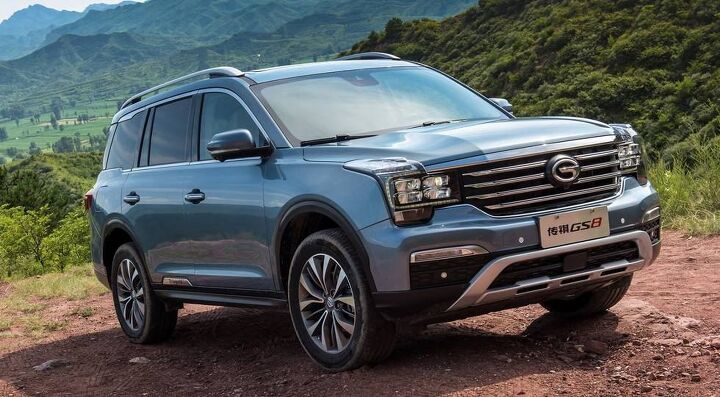
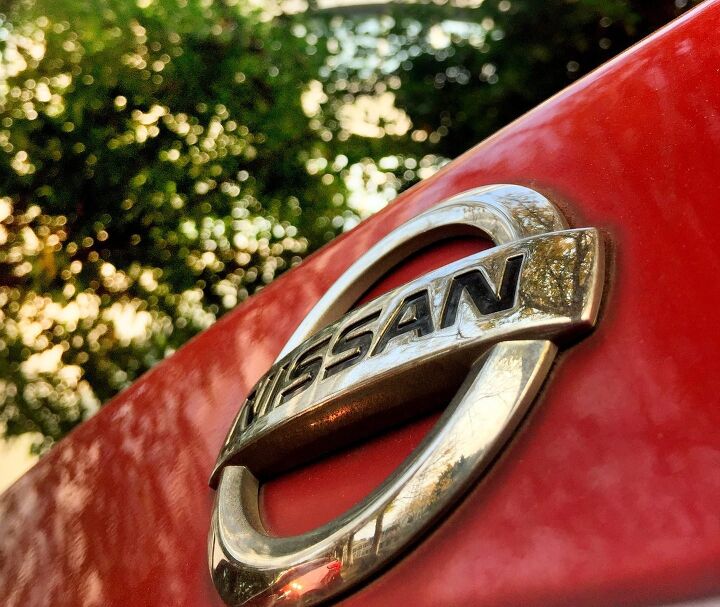
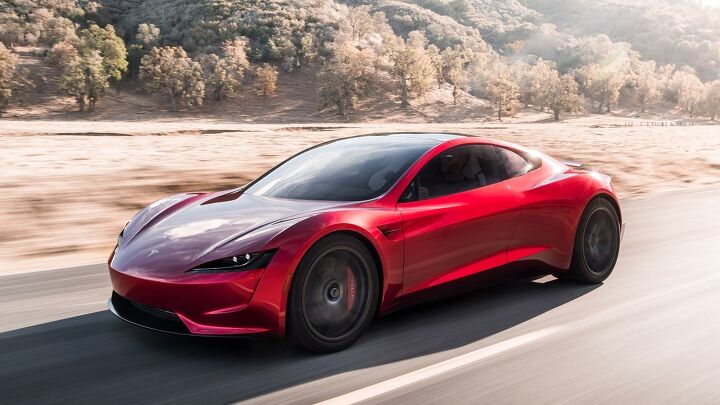
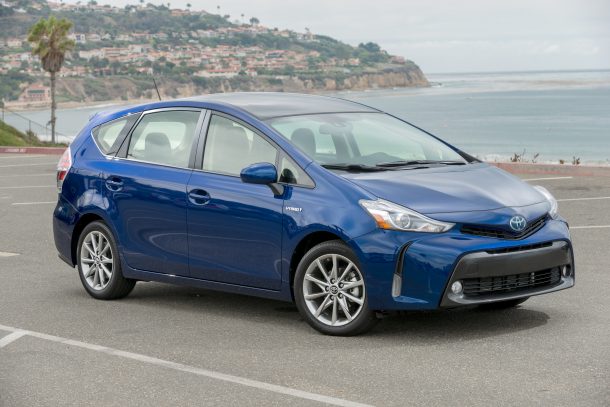
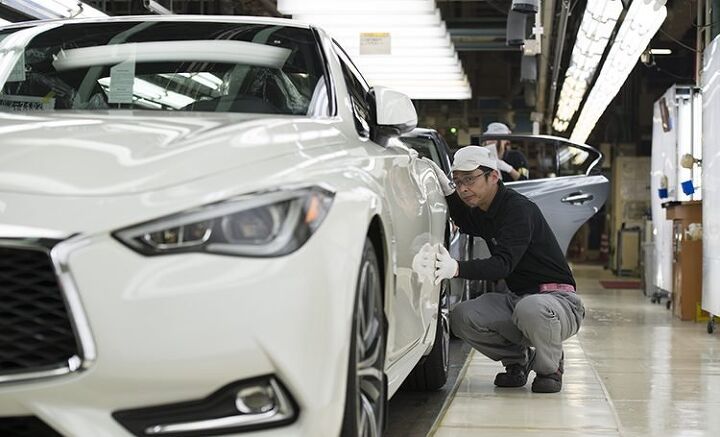

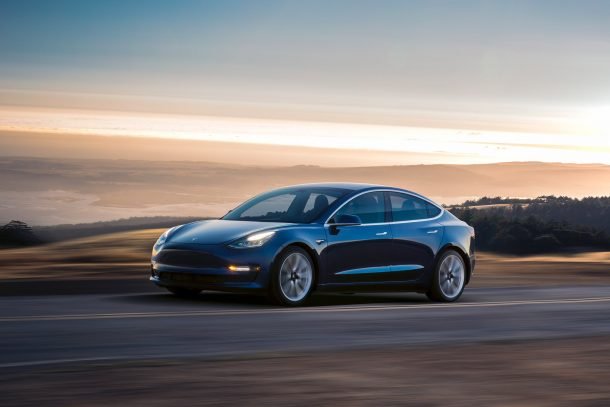


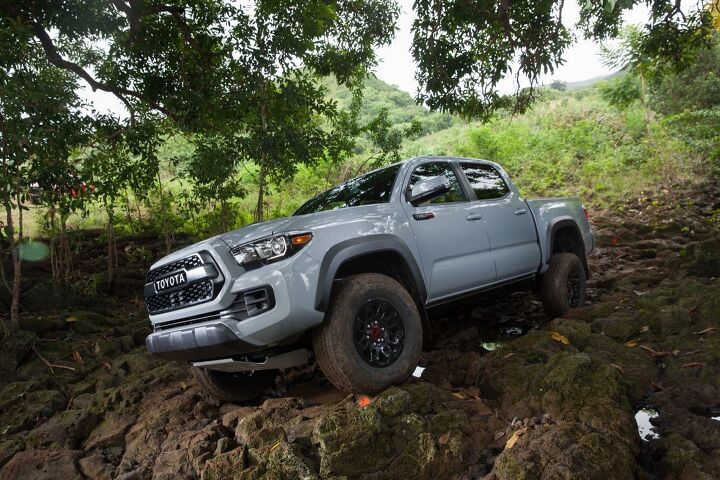


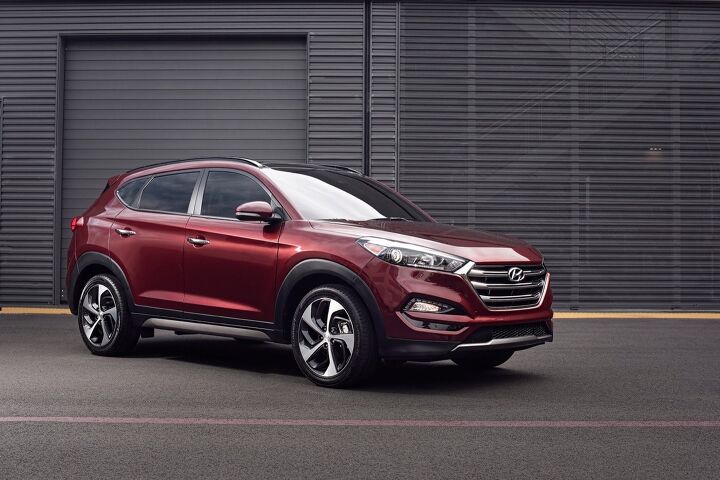





![See the USA in a Mahindra? Indian Automaker to Open Detroit-area Plant, Report Says [UPDATE]](https://cdn-fastly.thetruthaboutcars.com/media/2022/06/30/8778180/see-the-usa-in-a-mahindra-indian-automaker-to-open-detroit-area-plant-report-says.jpg?size=720x845&nocrop=1)


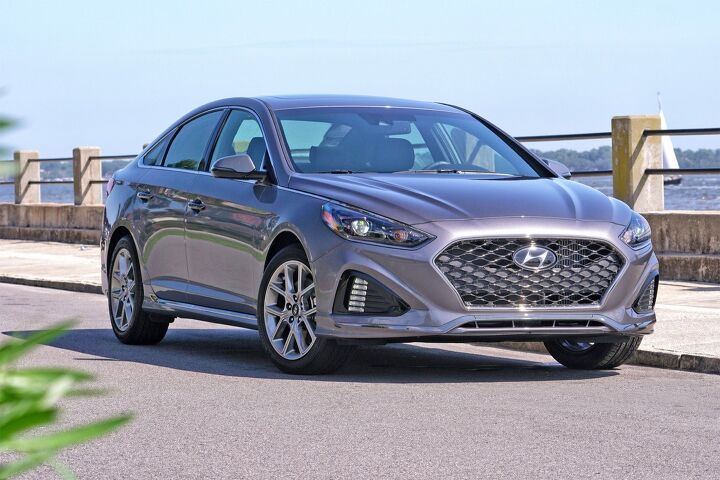


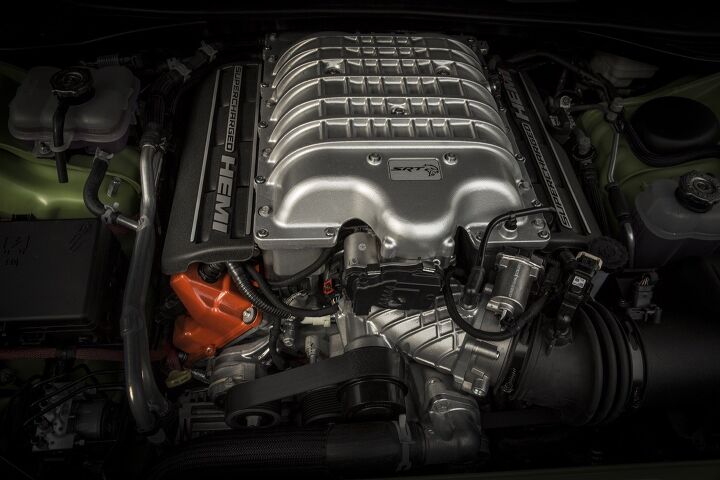
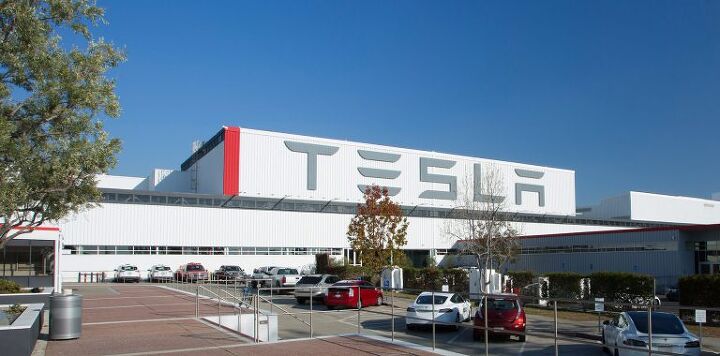










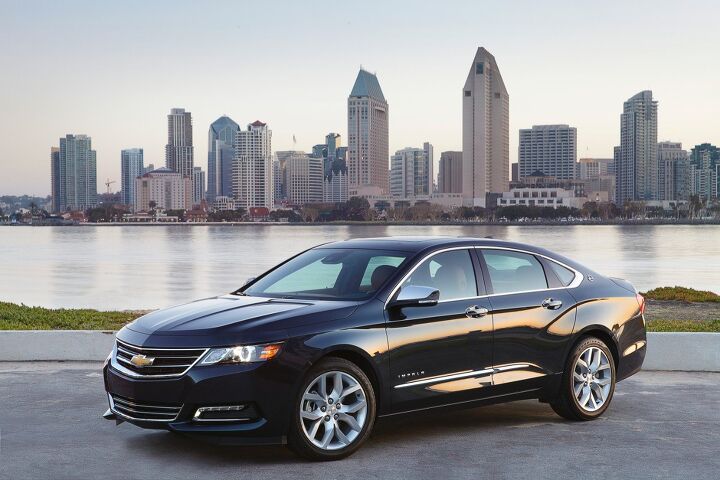
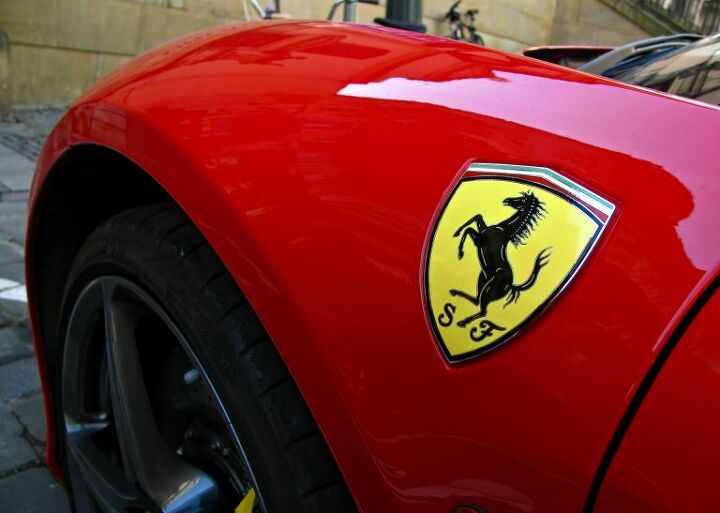
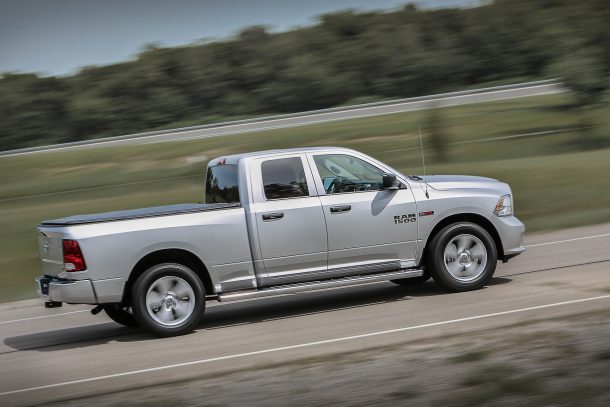

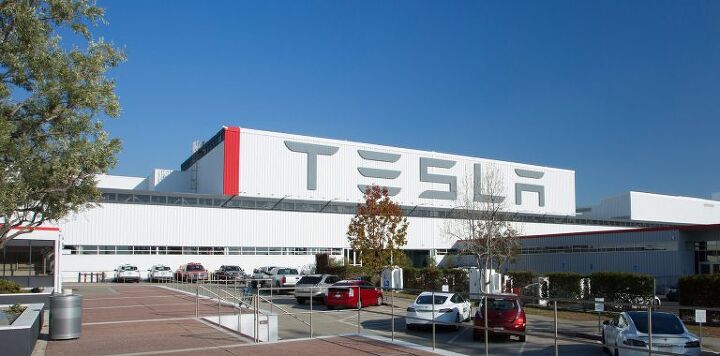
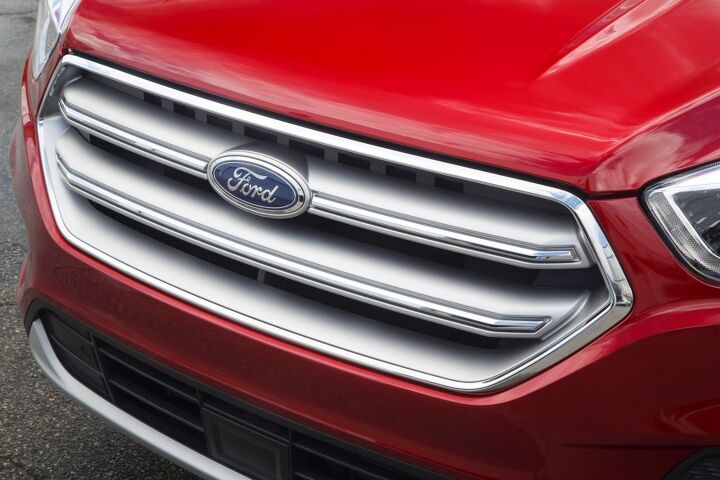

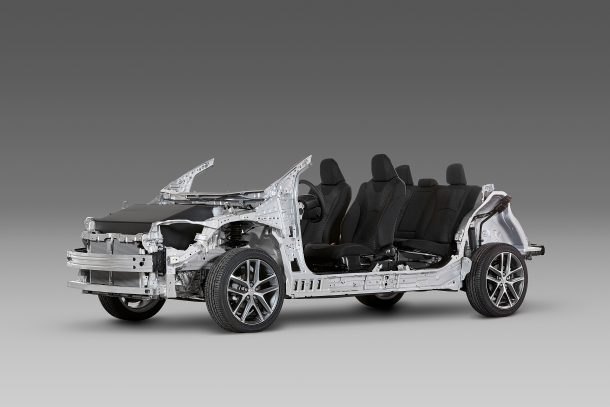


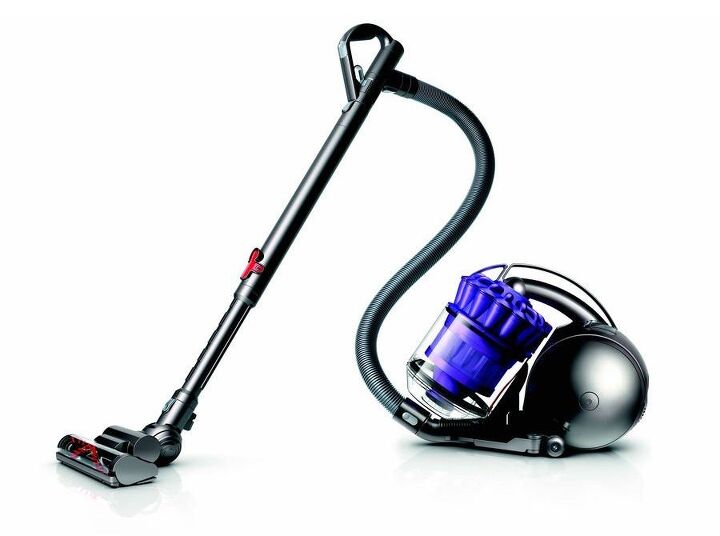

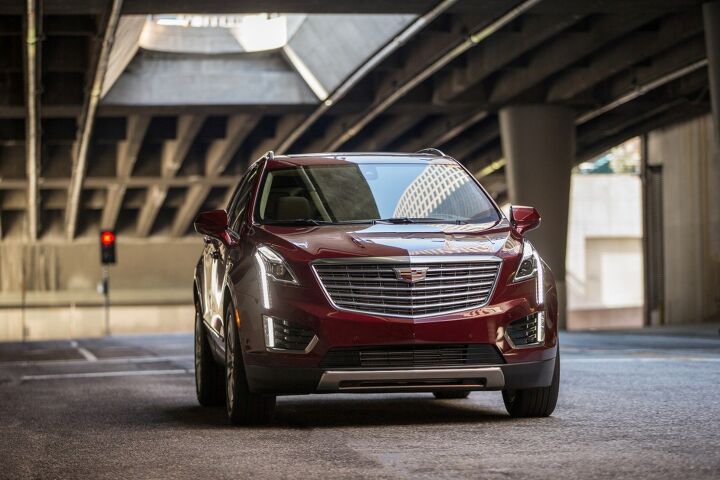


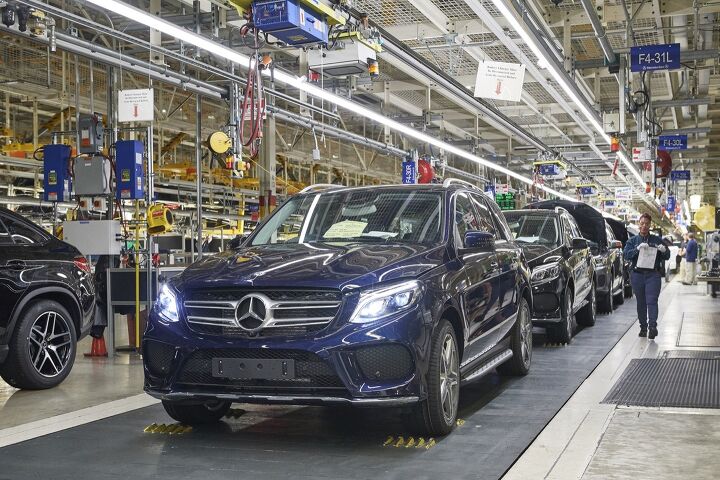
![Ford Transit Production Stalled for One Week, F-150 Assembly Remains at Full Throttle [UPDATED]](https://cdn-fastly.thetruthaboutcars.com/media/2022/07/19/9203032/ford-transit-production-stalled-for-one-week-f-150-assembly-remains-at-full-throttle.jpg?size=720x845&nocrop=1)
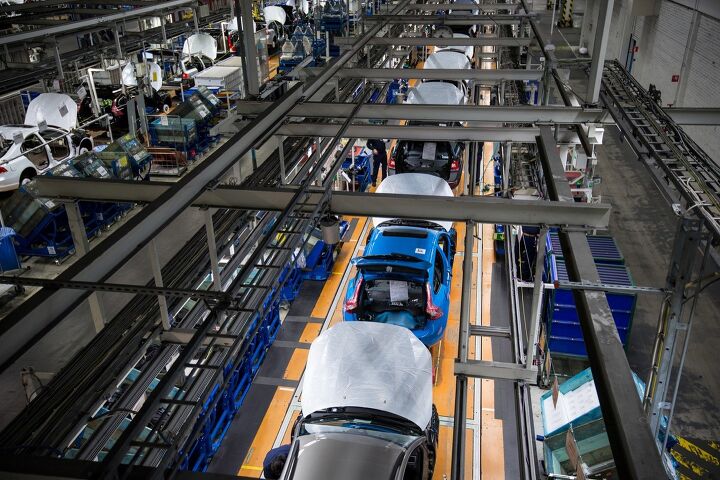

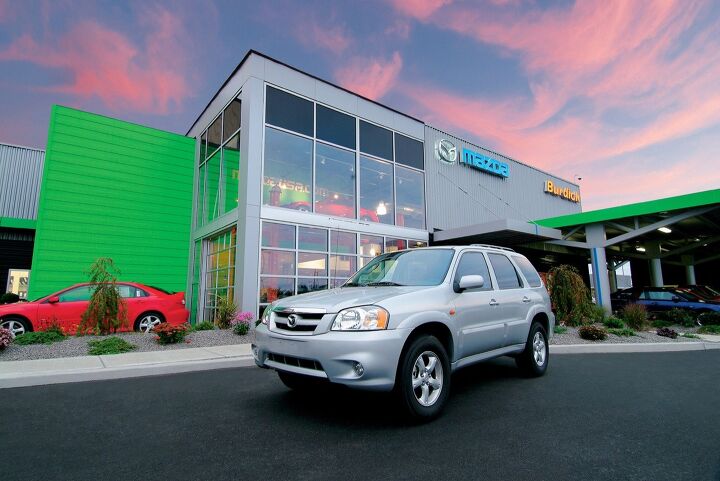












Recent Comments